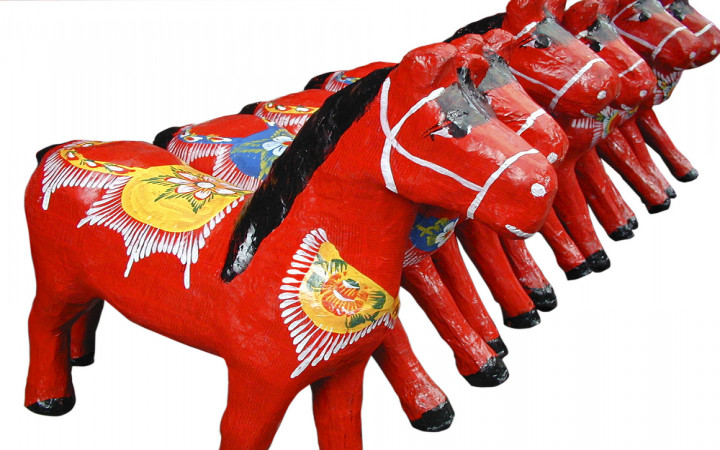Today’s Wonder of the Day was inspired by Emory. Emory Wonders, “What Is Papier Mache?” Thanks for WONDERing with us, Emory!
At one time or another, most of us have experienced the joy of creating our own artistic papier-mâché masterpiece. Papier-mâché — sometimes spelled paper-mâché — is a French phrase that literally means “chewed paper."
A finished papier-mâché project is made up of pieces of paper or pulp that are often reinforced with cloth or other materials and bound together with an adhesive paste. Papier-mâché paste can be made of watered-down glue, starch or wallpaper paste.
For example, regular white glue can be diluted with water until it forms a paste the consistency of heavy cream. You can also use a mixture of water and flour (or another starch) if you prefer.
Once you have your papier-mâché paste, you just need some paper and an idea to get started. Cut your paper into thin strips (newspaper is often used because it is cheap and works well) and soak it in your paste.
When your strips of paper are saturated (that means soaked through), place them onto whatever surface you decide to use to create the structure of your masterpiece. Common items used to create the structure for a papier-mâché project include balloons, light bulbs and wire mesh in different shapes.
Allow your strips of paper to dry slowly. Once they're dry, you can cut, sand and paint your work-in-progress until it resembles the masterpiece you had in mind from the beginning.
For example, a papier-mâché head can be made by wrapping saturated strips of newspaper around a balloon. When the strips dry, they will keep the round shape of the balloon. You can then cut, sand and paint the form to make it look like a head!
Papier-mâché has been around for centuries. The ancient Egyptians were known to have made coffins and death masks out of a primitive form of papier-mâché: layers of papyrus or linen covered with plaster.
Today, papier-mâché remains popular for arts and crafts, as well as in the production of certain items, such as the piñata and carnival floats you see in parades.
You might be surprised to learn, though, that papier-mâché has also been used to make some very interesting and practical things. During the 19th century in America, papier-mâché was used to make paper canoes!
In addition to large paper layers, cloth and wooden strips were added at key points to provide reinforcement. The final product was waterproofed and proved to be a lightweight alternative to heavier wooden canoes.
Even more interesting is the fact that papier-mâché auxiliary fuel tanks were developed during World War II using paper infused with plastic. These lightweight fuel tanks allowed short-range aircraft to extend their range, so that they could accompany long-range aircraft on longer missions.




